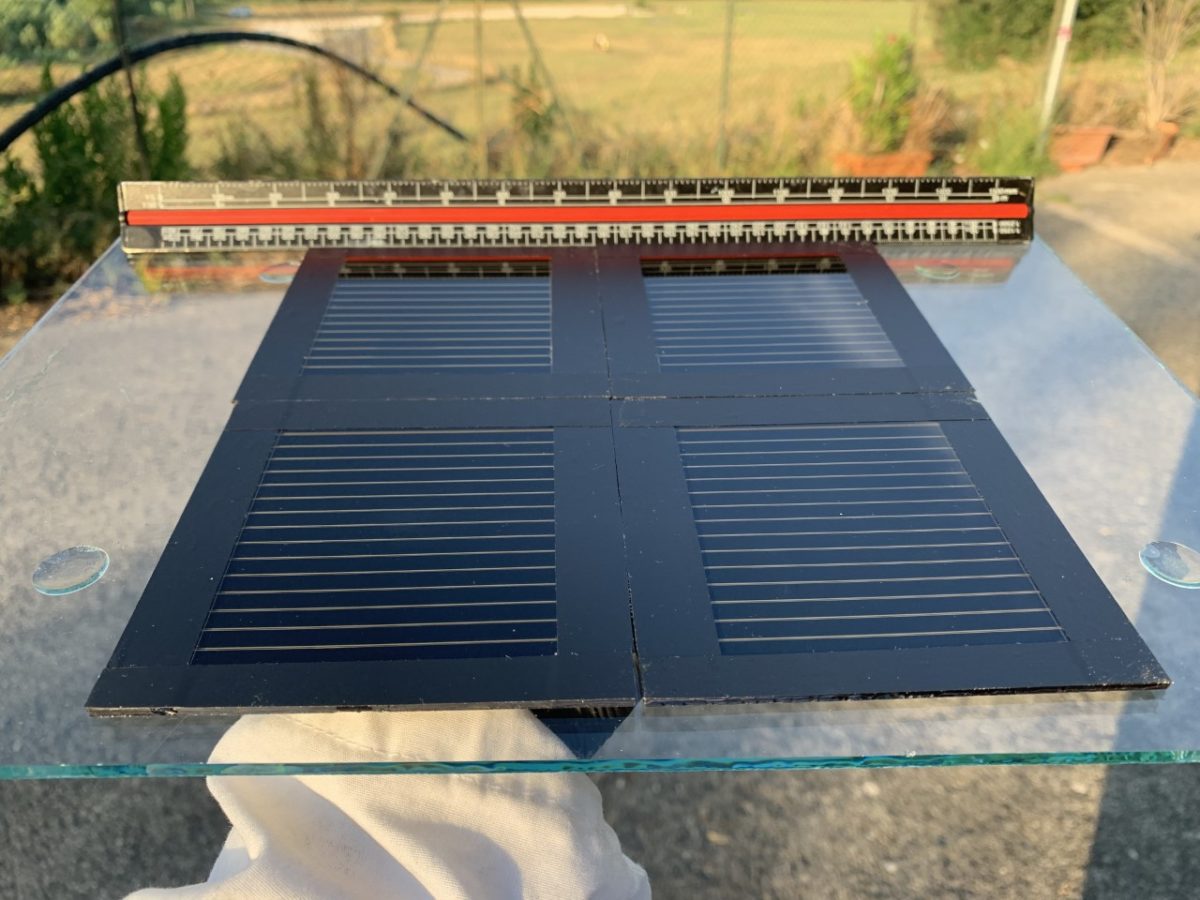An international research team has developed a perovskite solar module with an active area of 45.6 cm2 through a co-solvent dilution strategy that dilutes perovskite precursors to a low concentration.
“The new technique allows a reduction in the use of toxic solvents and the concentration of lead in the precursors,” the research's corresponding author, Aldo di Carlo, told pv magazine. “These key elements may facilitate the transfer of the perovskite solar cell technology to commercial production.”
The module was fabricated with methylammonium lead iodide (MAPbI3) perovskite solar cells via low-cost spin coating, which applies a uniform film onto a solid surface using centrifugal force and a liquid-vapor interface.
This technique is commonly thought not to be suitable to produce perovskite photovoltaics on industrial-scale substrates in a material-efficient way because of the nature of both spin coating and perovskites. “Our approach tackles this challenge by introducing a co-solvent that allows the liquid perovskite to spread evenly and dry very quickly and uniformly,” said co-author Hong Zhang, referring to the irregular thickness formed on the perovskite surface when the spin coating is applied.
As a co-solvent, the academics used an organic compound known as Tetrahydrofuran (THF). The cell achieved a maximum power conversion efficiency of 23.8%. “To the best of our knowledge, this is the highest efficiency obtained at such a dilute concentration of the perovskite precursor,” the scientists explained.
The module developed with this solar cell technology reached an efficiency of 18.45%, an open-circuit voltage of 16.07 V, a short-circuit current of 69.52 mA, and a fill factor of 75.35%.
“Encouragingly, our co-solvent dilution strategy allows using less than 80% of the starting perovskite material and toxic solvents to fabricate lab-scale devices with similar high performance, which inspired us to validate our strategy on large-scale module fabrication using industrial spin-coating approaches commonly available in a semiconductor fab,” the research team stated.
All the details of the new technique can be found in the paper A universal co-solvent dilution strategy enables facile and cost-effective fabrication of perovskite photovoltaics, published in nature communications. The research group includes scientists from the University of Rome Tor Vergata in Italy, the Swiss Federal Institute of Technology Lausanne (EPFL), and the North Carolina State University in the United States.
This content is protected by copyright and may not be reused. If you want to cooperate with us and would like to reuse some of our content, please contact: editors@pv-magazine.com.




2 comments
By submitting this form you agree to pv magazine using your data for the purposes of publishing your comment.
Your personal data will only be disclosed or otherwise transmitted to third parties for the purposes of spam filtering or if this is necessary for technical maintenance of the website. Any other transfer to third parties will not take place unless this is justified on the basis of applicable data protection regulations or if pv magazine is legally obliged to do so.
You may revoke this consent at any time with effect for the future, in which case your personal data will be deleted immediately. Otherwise, your data will be deleted if pv magazine has processed your request or the purpose of data storage is fulfilled.
Further information on data privacy can be found in our Data Protection Policy.